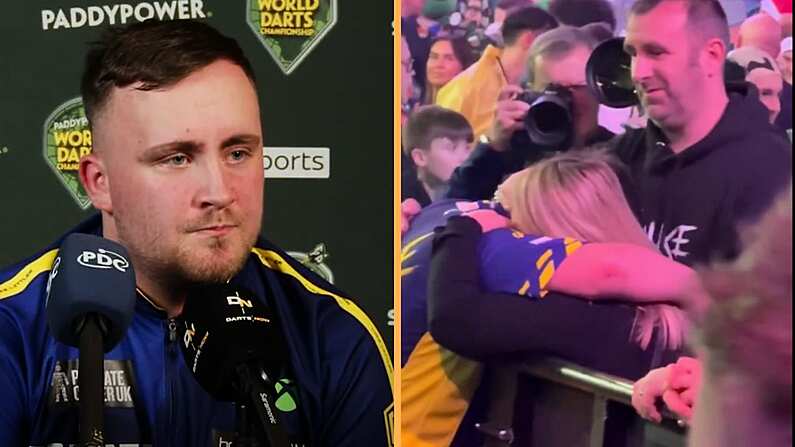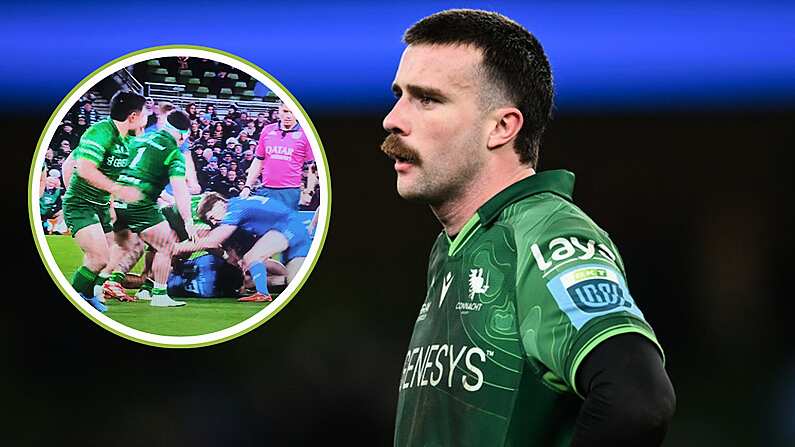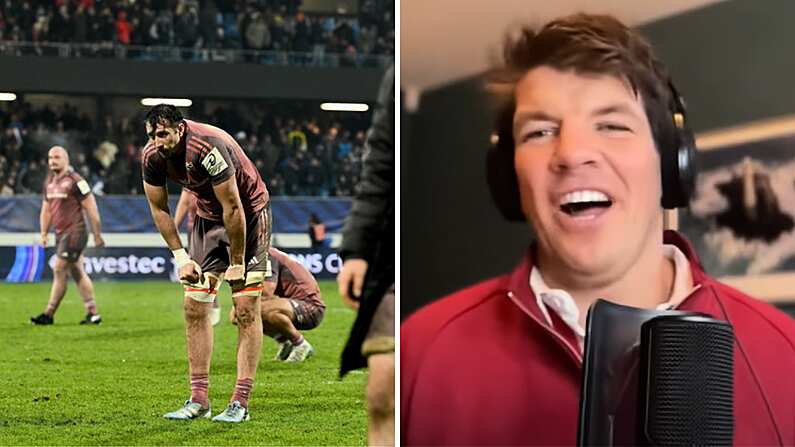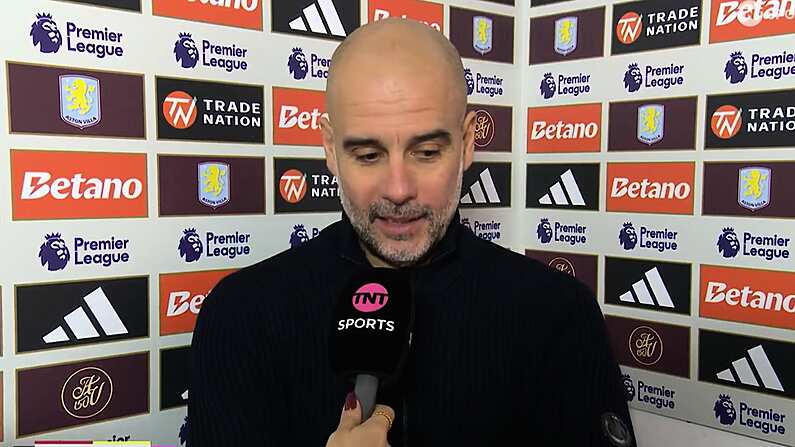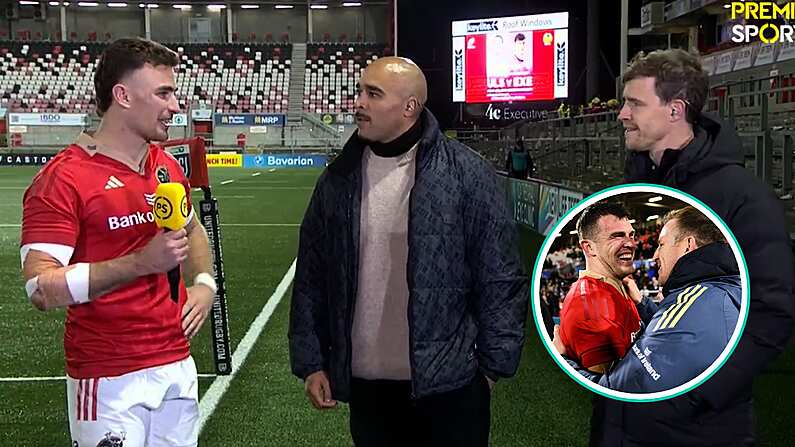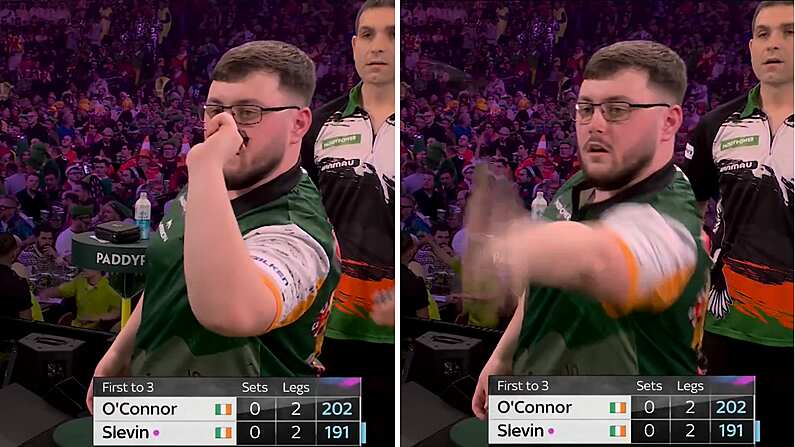Longtime League of Ireland stalwarts were left rubbing their eyes in amazement as last night as Eamon Dunphy, perched in an RTE studio, told the world that the Irish national team had much to learn from a League of Ireland side.
He bent the ear off a vaguely disinterested Liam Brady, telling him how good this Dundalk crowd were. This is quite an about turn. For thirty years, he has made exquisitely clear his low opinion of the League.
Dunphy was once in thrall to the domestic game. The first installment of his rollicking autobiography goes into loving detail about the Shamrock Rovers and Drumcondra teams of the 1950s. We hear much about how Dublin ground to a halt on days when the two sides met.
This was a golden era of Irish domestic football before television arrived in Ireland and everyone had their head turned by Match of the Day.
Shamrock Rovers
Eamon Dunphy leaves Reading in 1977 to return home to be part of John Giles's grand dream of bringing European football to Dublin.
A noble ambition, the lads quickly realise the extent of their task. The ploughed fields that functioned as playing surfaces in those days apparently didn't suit Rovers' needs. They were also too quick to promote young lads and the home support got on their backs.
Dunphy feels a special fury towards the small minds of the domestic league. Those who resent these lads landing back from England telling everyone how to play football. As far as Dunphy's concerned, they're protecting their own patch at the expense of the greater good.
As Gilesy said "I got an attitude which could be best summed with the attitude 'who does this little bollix think he is?"
While there, Eamo won his only medal in senior football, the 1978 FAI Cup, with Shamrock Rovers defeating Sligo Rovers 1-0 courtesy of a very dubious penalty.
He does not treasure the medal. Indeed, he told the Sligo Champion a few years ago that he felt so guilty about the manner of Rovers' victory that he gifted the medal to Sligo-born Irish Times journalist Sean Kilfeather.
He promptly jacks it in and soon sets about devoting himself full-time to the world of journalism and political speech-writing.
The whole experience seemed to harden Dunphy's heart towards the League of Ireland.
As he wrote six years later:
I left one of the best League of Ireland clubs and went on the dole rather than take £10,000 a year under false pretences, because I just couldn't participate in something which was a farce.
Chicken League
A talented writer, Dunphy becomes the football correspondent for the Sunday Tribune under editor Vincent Browne.
On that front, it appears from the outside that the vast majority of journalists who worked under Vincent Browne in the 1980s are no longer speaking to him.
We're not sure how relations are now between Dunphy and Browne but the only time Eamo has ever appeared on Browne's TV3 show was when Ger Colleran was presenting it.
While there, he is given the assignment from hell - covering the League of Ireland.
He approached this undertaking with an unusual degree of puckishness, making great pains to emphasise, rather than disguise, his disdain for the product.
At the time the League was sponsored by Pat Grace's chain of 'Famous Fried Chicken' shops. Thus, the phrase the 'Chicken League' was born.
As a term of ridicule it was memorably effective. Dunphy used the phrase liberally in his reports.
In 1985, he castigated administrators for admitting Longford Town into the League of Ireland. The club, he said, had no right to be in the League of Ireland, and are only there because a powerful administrator used muscle to get them elected."
He wondered why Mullingar or Bray Wanderers (then not an LOI club) had not been elevated. Longford Town, he said, had won no competition to get there. It was a reasonable question.
While praising Longford stalwarts like Tony Fagan and Zak Hackett, he nonetheless said they were being let down by the mediocrity surrounding them.
And he added this caustic judgement.
In my view, League of Ireland players work less hard than the average club athlete, the average badminton player, or the average Gaelic footballer or hurler, but they take a very good part-time wage from it.
'Dublin City'
In 1990, the idea is floated to put an Irish team in the Scottish League. Oddly, the idea was a brainchild of a respected economist and government adviser Colm McCarthy.
Dublin City were to enter the third or fourth tier of Scottish football. From there, they would effortlessly glide up the divisions, exploiting the best of football talent lying around this island.
Distressingly for League loyalists, other supporters of the venture included former LOI players and stalwarts, Liam Touhy and Ray Treacy.
In January 1990, McCarthy presented a submission to the Scottish Football Association saying bluntly that Dublin needed better football and Scottish football needed new blood.
It was their pitch that 'professional club football in Dublin, one of the largest cities in the British Isles, has gone into serious and irreversible decline.'
In Ireland, there was a 'market but no product'.
The four horsemen of the domestic football apocalypse - Colm McCarthy, Jonathan Irwin, Liam Touhy, Ray Treacy - were accused of stabbing the League in the back. The President of the League of Ireland announced coolly that he was "loath to give the project credibility through public comment."
Eamon Dunphy was a very enthusiastic supporter of the idea. He did not agree that the proposal constituted a stab in the back for the League of Ireland. His considered opinion on that point was that 'you can't hurt a corpse by stabbing it.'
He was also sceptical that the Dublin City idea would undermine the League of Ireland in the eyes of the Irish public.
The idea that the League of Ireland could be rendered any less credible than it is, is amusing not to say audacious.
Wimbledon
Eamon Dunphy was an excited and very active participant in the project to bring Wimbledon to Dublin. Though, he disputed that interpretation.
Read more about that here.
Wimbledon was not 'coming to Dublin'. Rather a partnership with Hammam would create a new club.
George Hamilton put it to Dunphy that he once believed it was possible for an extant League of Ireland club to make a breakthrough in Europe with a bit of investment and a bit of support.
Following the failure of the Shamrock Rovers dream, Eamo said he realised it was an impossibility. His comments on the League are moderate and reasoned here.
Read more: The Rancorous History Of Eamon Dunphy v The Irish Football Manager


